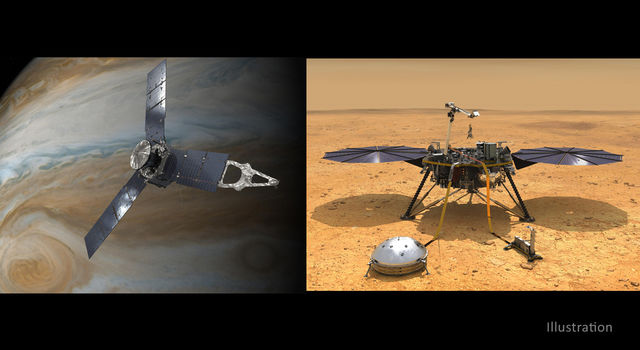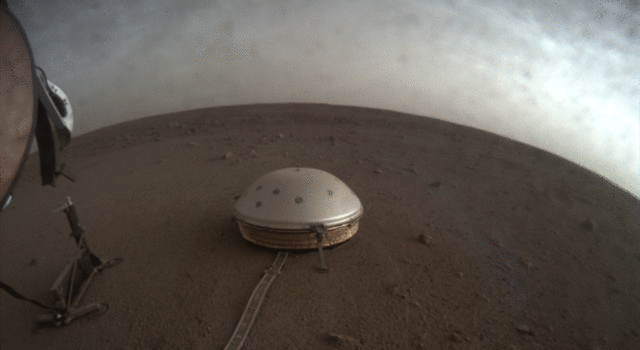Blogs | Dawn Journal | June 10, 2007
June 10, 2007
Dear Dawntelligentsia,
The complex and intricate steps necessary for Dawn to reach space continue as its launch date grows near.
Workers have begun assembling Dawn’s launch vehicle at Cape Canaveral’s Space Launch Complex 17. Shunning the banal names used by fictional (and some actual) rockets for many decades, the real thing carries an appellation that evokes the true passion of our species for exploring the cosmos. Readers here on Earth (and on most other planets with comparable or greater gravity) are sure to be stirred by the name Delta II 7925H-9.5, capturing everything that’s cool about rockets. Regardless of what it is called, United Launch Alliance’s family of Delta II rockets has a remarkable record of success in delivering spacecraft for NASA and other organizations to space.
As spectacular as a launch is, it represents only the beginning of what is far more exciting -- Dawn’s interplanetary journey of exploration. Launch depends upon many prosaic (but important!) accomplishments, one of which did not go according to plan recently. A crane malfunctioned on pad B at Cape Canaveral’s Space Launch Complex 17, where Dawn’s launch vehicle is being erected. The rocket consists of 9 solid rocket motors and 3 stages.
The 6 motors that will be ignited at liftoff to augment the first stage weigh nearly 18,900 kg (more than 41,600 pounds) each and are 14.66 meters (48 feet 1 inch) tall. The other 3 motors, to be ignited about 79 seconds after liftoff, weigh nearly 19,100 kg (more than 42,000 pounds) each and are 15.06 meters (49 feet 5 inches) tall. (The 3 “air-start” solid motors are taller than the “ground-start” motors because their nozzles are longer.) Given both the great power and tremendous importance of the solid rocket motors, they have to be handled carefully.
Together reaching to a height of 29.4 meters (96 feet 5 inches), the first stage and the interstage (the section between the first and second stages) were placed on the launch pad first. Following that, 3 solid motors were erected on the pad. Then, on May 30, when the first one was being positioned to mate it to the first stage, the crane encountered a problem. No launch vehicle components were damaged.
It took about a week to restore the crane to health, and that delay has necessitated a change in Dawn’s launch date. As recalled from tales told throughout the halo of the Milky Way galaxy since the very first of these logs was written, the extraordinary capability of its ion propulsion system gives Dawn much greater flexibility in when it can launch than interplanetary missions that use conventional chemical propulsion have. The most significant constraint now on Dawn’s launch date is the more limited time during which another interplanetary probe can be launched from a nearby pad. Now in preparation for a thrilling mission at Mars, Phoenix is scheduled for an August departure from pad A. Because of some shared systems and other considerations, some time is needed between launches from these adjacent pads.
Dawn’s new launch period opens on July 7. The launch window that day is from 4:09:31 to 4:36:22 pm EDT. (We apologize for the conflict with the 350,000th Event Horizon Games in the Virgo cluster of galaxies.) In case launch does not occur then because of unfavorable weather or some other problems, here are the windows on the subsequent few days:
July 8: 4:04:49 - 4:33:02
July 9: 3:56:15 - 4:25:23
July 10: 3:53:32 - 4:22:25
July 11: 3:45:13 - 4:14:44
Windows have been computed for still more days, and if launch does not happen by July 11, readers may be assured they can find later windows posted in a future log or in the on-screen captions of the Daily Asteroid Report broadcast on the Interstellar News Channel.
In preparation for launch, the spacecraft now has a full supply of 425 kg (937 pounds) of xenon propellant for its ion propulsion system. The tank already had almost 15 kg (33 pounds) of the noble gas that had been loaded in February 2005 at JPL. It took about 25 hours to load the rest of the xenon this week. While that may seem slow to fill a 272-liter (71.9-gallon) tank, it is worth recalling that more than 5 years of ion thrusting will be required to empty the tank.
The reaction control system, used as one of the means to rotate the spacecraft in the zero-gravity of spaceflight, was given its complete provision of 45.6 kg (101 pounds) of hydrazine. The propellant is highly toxic, so engineers and technicians loading it in the Hazardous Propellant Facility at Astrotech Space Operations wore today’s most fashionable protective garments with self-contained air supplies.
The operations team spent long hours the last 6 days conducting a set of operational readiness tests (ORTs) known affectionately as the ORTathon. The hub for the ORTs is mission control at JPL, but participants were not only there but also at Orbital Sciences Corporation, Astrotech, all 3 Deep Space Network complexes (in Goldstone, California; Canberra, Australia; and Madrid, Spain), and the European Space Operations Centre in Darmstadt, Germany (the control center for a receiving station in Perth, Australia to be used for a few hours after launch). The operations team had to diagnose and resolve many guileful problems created by the simulation supervisor (known as “sim sup” as well as various other sobriquets, depending upon how imaginatively diabolical he is). The ORTs used a sophisticated combination of hardware and software to simulate the spacecraft.
The next log will continue with the progress in preparing to separate Dawn from Earth’s grasp.
Dr. Marc D. Rayman
June 10, 2007
TAGS:DAWN, VESTA, CERES, DWARF PLANET, MISSION, SPACECRAFT







